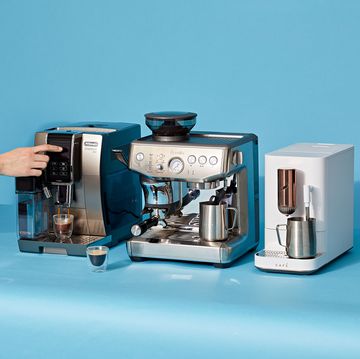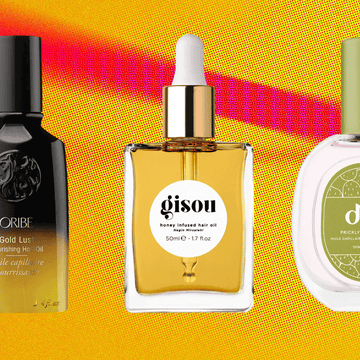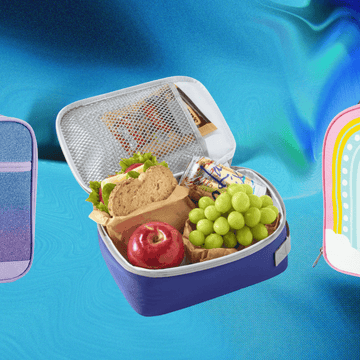This story is part of our new series, Reality Check, in which GH experts uncover the truth behind common misconceptions about health, safety, and everyday living.
Editor’s Note: Recently, the European Union (EU) banned Trimethylbenzoyl Diphenylphosphine Oxide (TPO), an ingredient used in some gel nail polishes that acts as a photoinitiator, helping nails dry faster and last longer. Beginning September 1, 2025, the sale and use of products containing TPO are prohibited in the EU following its reclassification as a Category 1B reproductive toxicant.
Recent animal studies indicate potential links between TPO and fertility and reproductive health issues, including impacts on the endocrine system. However, no studies have specifically examined human exposure to TPO through gel manicures.
Currently, the sale or use of TPO remains unrestricted in the United States, and GH Beauty Lab experts are actively monitoring the situation. Should you have reservations about using the ingredient and prefer to exclude it, we advise reviewing your product’s ingredient label or consulting your nail technician concerning professionally available products.
Nothing beats leaving the salon with a gel manicure with perfectly neat cuticles and high-shine polish, knowing it will last. But there are drawbacks too, namely how time-consuming a salon appointment can be and the cost of a manicure. That’s why at-home UV gel manicures have been trending.
“With practice and attention to detail, you can achieve salon-like results at home,” said Dendy Engelman, M.D., F.A.C.M.S., F.A.A.D., a board-certified cosmetic dermatologist and Mohs surgeon at the Shafer Clinic in New York City. “Though applying gel polish on your own may take a little longer and require patience to avoid smudges or uneven edges, consistent practice can yield professional-looking results.”
But are at-home UV gel manicures actually safe? We went to the experts, including Good Housekeeping Institute Beauty Lab Senior Chemist Danusia Wnek, for answers.
The Big Picture
At-home UV gel manicures are strikingly similar to the salon version, and they have exploded in popularity.
Unlike traditional nail polishes that require air-drying, both at-home and salon UV gel manicures use UV or LED lamps to quickly dry and set polish layers between coats. “The gel manicure technology allows for not only a quicker drying time but also a more durable, longer-lasting finish,” explains Wnek. Typically a base coat is applied first, then two coats of colored polish and finally a top coat, and each layer is cured immediately after application.
Until recently, UV gel manicures were available only at salons, but a few years ago at-home versions entered the market, and given the convenience of a DIY gel manicure and the relatively low cost of a kit, their popularity has been on the rise. In fact, some sources estimate that the market for at-home kits will nearly double, from $771 million in 2023 to $1.2 billion in 2031.
“Years ago, before the pandemic, you could not get a gel kit unless you were a licensed professional,” said Julie Kandalec, a celebrity manicurist and an educator. “Now they’re everywhere.”
The Debate
At-home UV gel manicure kits have raised health and safety concerns for a few reasons.
The three main worries about DIY kits include:
- Exposure to UV light. In a typical UV gel manicure, whether done at a salon or at home, each hand is exposed to UV light for several minutes. Depending on how often you get gel manicures, this exposure could add up. “Exposure to UV light can prematurely age skin and increase skin cancer risk if proper precautions, like wearing sunscreen or UV-protective gloves, aren’t taken,” says Dr. Engelman.
- Use of low-quality ingredients and components. Some very inexpensive at-home kits may contain allergens or irritants that can cause skin reactions. “Salon products may undergo stricter quality control and meet professional application standards,” Dr. Engelman said. “Some at-home kits may include different concentrations of ingredients or added chemicals to extend shelf life or improve ease of use.”
If you use an at-home kit, keep an eye out for signs of an allergic reaction to gel polish such as redness, itching, swelling, and blistering around the nail or on the surrounding skin. “Some people may experience lifting or peeling of the skin, or the nail may become loose,” says Dr. Engelman. “If you notice any of these symptoms, stop using the manicure kit immediately and consult a dermatologist for guidance.”
Kandalec points out the indications of significant price differences between salon and at-home equipment: A professional UV gel curing lamp costs $300, but full kits found on mass retailer sites — including a lamp, base coat, a top coat, and a dozen gel nail polishes — can sell for as little as $30. “When a full kit is a tenth of the price of one lamp, it’s obvious that the safety protocols are not going to be the same no matter what,” she says. - Improper application and removal. One of the biggest mistakes people make is mixing and matching polishes, base coats, top coats, and lamps from different brands. “The pieces from one brand are designed to work together,” Kandalec says. “There’s different output of the UV light—maybe it’s a little stronger or a little bit less strong, because the ratio of lacquer to gel is different in every line.” Also, improper application or removal of gel polish — which may be more common when doing everything at home — can damage the natural nail plate, causing peeling, thinning, or weakening of nails.
The Science
Concerns about UV exposure are overblown.
“When gel manicures first came on the scene more than a decade ago, the UV exposure associated with them was often compared to that from tanning beds,” Wnek says. “Though UV gel manicure radiation intensity is less than that of tanning beds, it was thought at the time that the cumulative exposure might pose a risk to consumers, and dermatologists cautioned against unnecessary exposure. Since then, there have been several published reports indicating that the UV exposure does not pose as big a threat as was originally thought.”
For example, in a 2013 study in Photochemistry and Photobiology, researchers tested six UV nail lamps in three positions to see how much light they gave off and whether it could be harmful. At close range, the study showed, the UV output was low enough that a person could be exposed for anywhere from about 30 minutes to more than 4.5 hours in day—significantly longer than a typical nail appointment takes—before reaching the recommended safety limit. In fact, the experts concluded that “the risk of developing nonmelanoma skin cancer [from typical manicure exposure] was up to nearly 50 times lower than the risk from being exposed to natural midday sunlight.”
In a 2020 article (“Ultraviolet Light Gel Manicures: Is There a Risk of Skin Cancer on the Hands and Nails of Young Adults?”) in The Journal of Clinical and Aesthetic Dermatology, researchers reviewed studies looking at skin cancer cases in the hands and nails of people who got UV-cured gel manicures regularly and concluded that gel manicures posed little to no carcinogenic risk.
“The sound bite I always use, because it’s really easy to understand, is that you get more UV exposure walking to your mailbox than you do in an entire nail appointment,” says Kandalec.
The Bottom Line
The risks posed by at-home UV gel manicures are often due to user error.
“While UV gel manicures are generally safe, they do require precautionary measures,” Wnek says. “Practice proper nail care and preparation. Avoid excessive buffing, which can weaken the nail plate, and refrain from cutting the cuticles, as this can heighten the risk of infection. Avoid skin contact when applying the gel lacquers. Use the light source that matches your nail kit, and follow the manufacturer’s instructions.”
Keep these tips in mind:
Of course, you can always opt for other types of DIY manis. “There are so many great press-on designs now, or just go for regular polish,” Kandalec says.
Remember, even if you heed all this advice, the quality of a DIY job may not be the same as that of a salon manicure. “Preparing nails and applying polish, especially with your nondominant hand, can be challenging for some and can affect the results,” Wnek says. “Mastering this skill may require some time, but the outcomes of salon and home applications are equivalent. When gel nail polishes are used and applied correctly, consumers can achieve salon-like results at home.”
Why trust Good Housekeeping?
Celia Shatzman has covered beauty, including all things nail-related, for nearly 20 years.
Since joining GH in 2014, GH Beauty Lab Senior Chemist Danusia Wnek has been developing and overseeing the testing of multiple beauty categories, including nail products, utilizing both lab instrumentation and consumer feedback.
Dendy Engelman, M.D., F.A.C.M.S., F.A.A.D., is a board-certified cosmetic dermatologist and Mohs surgeon at the Shafer Clinic in New York City. Julie Kandalec is a New York City–based celebrity manicurist and the founder of Julie K Nail Academy.

















